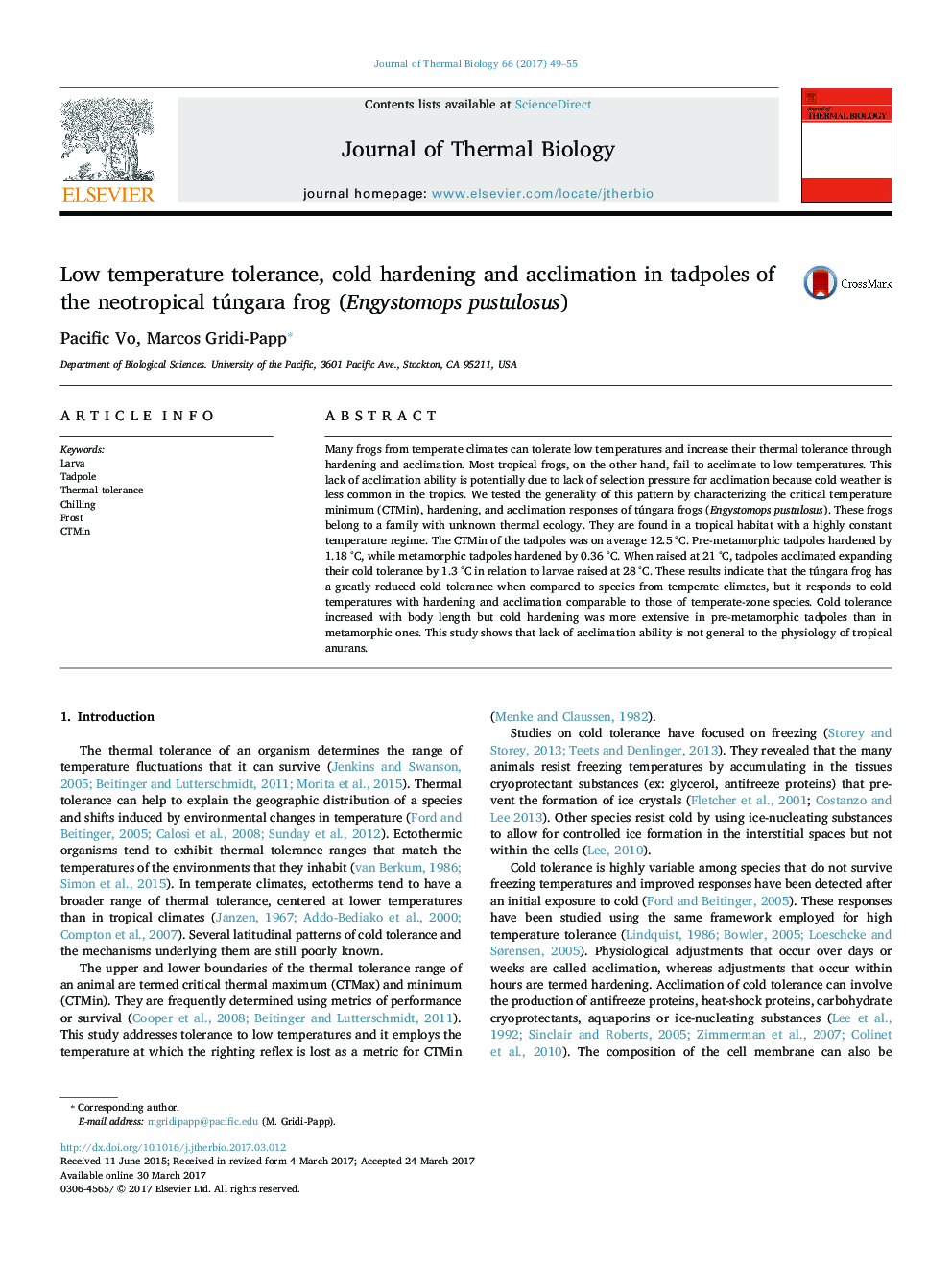| Article ID | Journal | Published Year | Pages | File Type |
|---|---|---|---|---|
| 5593521 | Journal of Thermal Biology | 2017 | 7 Pages |
Abstract
Many frogs from temperate climates can tolerate low temperatures and increase their thermal tolerance through hardening and acclimation. Most tropical frogs, on the other hand, fail to acclimate to low temperatures. This lack of acclimation ability is potentially due to lack of selection pressure for acclimation because cold weather is less common in the tropics. We tested the generality of this pattern by characterizing the critical temperature minimum (CTMin), hardening, and acclimation responses of túngara frogs (Engystomops pustulosus). These frogs belong to a family with unknown thermal ecology. They are found in a tropical habitat with a highly constant temperature regime. The CTMin of the tadpoles was on average 12.5 °C. Pre-metamorphic tadpoles hardened by 1.18 °C, while metamorphic tadpoles hardened by 0.36 °C. When raised at 21 °C, tadpoles acclimated expanding their cold tolerance by 1.3 °C in relation to larvae raised at 28 °C. These results indicate that the túngara frog has a greatly reduced cold tolerance when compared to species from temperate climates, but it responds to cold temperatures with hardening and acclimation comparable to those of temperate-zone species. Cold tolerance increased with body length but cold hardening was more extensive in pre-metamorphic tadpoles than in metamorphic ones. This study shows that lack of acclimation ability is not general to the physiology of tropical anurans.
Related Topics
Life Sciences
Agricultural and Biological Sciences
Agricultural and Biological Sciences (General)
Authors
Pacific Vo, Marcos Gridi-Papp,
